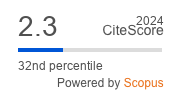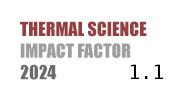ABSTRACT
Various studies aim to reduce wear and material loss in machines where parts are in relative motion and contact. Damage caused by the wear of the material leads to work loss and financial issues. Various additives are added to oils to reduce financial losses that occur due to material wear. The widespread use and superior properties of boron minerals have drawn researchers' attention, leading to the incorporation of borate additives into oil lubricants. In this study, two different borate ester additives containing Didecylamine and Di-n-Dodecyl groups were synthesized, and their effects on wear, friction, and temperature were experimentally investigated. The additives were mixed into 10W-40 motor oil at concentrations of 0.2%, 0.6%, 1%, and 3% by weight. Experiments were conducted using a four-ball wear test device under varying speeds and contact forces. In the experiments carried out with BE1 and BE2 doped engine oil under 200 N, 400 N, and 600 N loads, it was found that the increase in the additive increased the amount of wear. In the experiments carried out with BE1 and BE2 added oils under different loads, it was observed that the increase in the additive ratio caused the contact surface and increased the amount of wear, friction coefficient, and temperature. The lowest wear amount was observed in oils with 0.2% BE2 under a 200 N load. The study concluded that adding borate ester additives to commercially available motor oils is unsuitable.
KEYWORDS
PAPER SUBMITTED: 2024-12-11
PAPER REVISED: 2025-02-11
PAPER ACCEPTED: 2025-05-04
PUBLISHED ONLINE: 2025-09-26
THERMAL SCIENCE YEAR
2025, VOLUME
29, ISSUE
Issue 4, PAGES [2989 - 2999]
- Gao, J., et al., Frictional Forces and Amontons' Law: From the Molecular to the Macroscopic Scale, J. Phys. Chem. B, 108 (2004), 11, pp. 3410-3425
- Cebeci, T., Improving Engine Oil Usage Periods with Engine Oil Analysis Method, Soma Vocational School Technical Sciences Journal, 1 (2022), 33, pp. 24-35
- Omrani, E., et al., Effect of Micro- and Nano-Sized Carbonous Solid Lubricants as Oil Additives in Nanofluid on Tribological Properties, Lubricants, 7 (2019), 3, 25
- Zhang, J., et al., A Study of N and S Heterocyclic Compound as a Potential Lubricating Oil Additive, Wear, 224 (1999), 1, pp. 160-164
- Wu, Y., et al., Effect of Sulfur on the Hydrolytic Stability and Tribological Properties of N-Containing Borate Ester, Wear, 504-505 (2022), 204433
- Ozer, S., et al., Effect of Using Borax Decahydrate as Nanomaterials Additive Diesel Fuel on Diesel Engine Performance and Emissions, Energy, 266 (2023), 126412
- Jason, Y. J. J., et al., Tribological Behaviour of Graphene Nanoplatelets as Additive in Pongamia Oil, Coatings, 11 (2021), 6, 732
- Huang, W., al., The Performance and Antiwear Mechanism of (2-Sulfurone-Benzothiazole)-3-Methyl Esters as Additives in Synthetic Lubricant, Tribol. Int., 33 (2000), 8, pp. 553-557
- Li, J., et al.., Hydrolytic Stability and Tribological Properties of N-Containing Heterocyclic Borate Esters as Lubricant Additives in Rapeseed Oil, Tribol. Int., 73 (2014), May, pp. 101-107
- Xiong, L., et al., Tribological Properties Study of N-Containing Heterocyclic Imidazoline Derivatives as Lubricant Additives in Water-Glycol, Tribol. Int., 104 (2016), Dec., pp. 98-108
- Yang, H., et al., Tribological Behavior of Nanocarbon Materials with Different Dimensions in Aqueous Systems, Friction, 8 (2020), 1, pp. 29-46
- Yao, M., et al., Bisimidazolium Ionic Liquids as the High-Performance Antiwear Additives in Poly(Ethylene Glycol) for Steel−Steel Contacts, ACS Appl. Mater. Interfaces, 1 (2009), 2, pp. 467-471
- Shah, F. U., et al., Novel Alkylborate-Dithiocarbamate Lubricant Additives: Synthesis and Tribophysical Characterization, Tribol. Lett., 45 (2012), 1, pp. 67-78
- Khuong, L. S., et al., Effect of Gasoline-Bioethanol Blends on the Properties and Lubrication Characteristics of Commercial Engine Oil, RSC Adv., 7 (2017), 25, pp. 15005-15019
- Zeng, Q., Understanding the Lubrication Mechanism between the Polyhydroxyl Group Lubricants and Metal Surfaces, J. Adhes. Sci. Technol., 32 (2018), 17, pp. 1911-1924
- Sharma, U. C., Sachan, S., Friction and Wear Behavior of Karanja Oil Derived Biolubricant Base Oil, SN Appl. Sci., 1 (2019 ), 7, 668
- Ziyamukhamedova, U., et al., Investigating Friction and Antiwear Characteristics of Organic and Synthetic Oils Using H-BN Nanoparticle Additives: A Tribological Study, Lubricants, 12 (2024), 1, 27
- Reddy, M. K., et al., Influence of Nanophase Particles on the Physical, Chemical and Tribological Char-acteristics of SAE15W40, J. Bio Tribocorros, 9 (2023), 1, 20
- Yaqoob, H., et al., Tribological Behaviour and Lubricating Mechanism of Tire Pyrolysis Oil, Coatings, 11 (2021), 4, 386
- Yang, G., et al., Tribological Characteristic and Mechanism Analysis of Borate Ester as a Lubricant Additive in Different Base Oils, RSC Adv., 7 (2017), 13, pp. 7944-7953
- Sun, Y., et al., Tribological Properties and Action Mechanism of N,N-Dialkyl Dithiocarbamate-Derived S-Hydroxyethyl Borate Esters as Additives in Rapeseed Oil, Wear, 266 (2009), 9-10, pp. 917-924
- Xiong, S., et al., Synthesis, Characterization and Tribological Performance of Two Novel Borate Esters Containing Nitrogen as a Multifunctional Additive in Synthetic Ester Base Oil, J. Dispers. Sci. Technol., 41 (2020), 10, pp. 1540-1548
- McQueen, J. S., et al., Friction and Wear of Tribofilms Formed by Zinc Dialkyl Dithiophosphate Anti-wear Additive in Low Viscosity Engine Oils, Tribol. Int., 38 (2005), 3, pp. 289-297
- Charoo, M. S., Wani, M. F., Tribological Properties of H-BN Nanoparticles as Lubricant Additive on Cylinder Liner and Piston Ring, Lubrication Science, 29 (2017), 4, pp. 241-254
- Ozler, L., The Influence of Variable Feed Rate on Bushing and Surface Roughness in Friction Drilling, Journal of the Brazilian Society of Mechanical Sciences and Engineering, 41 (2019), 8, 308

